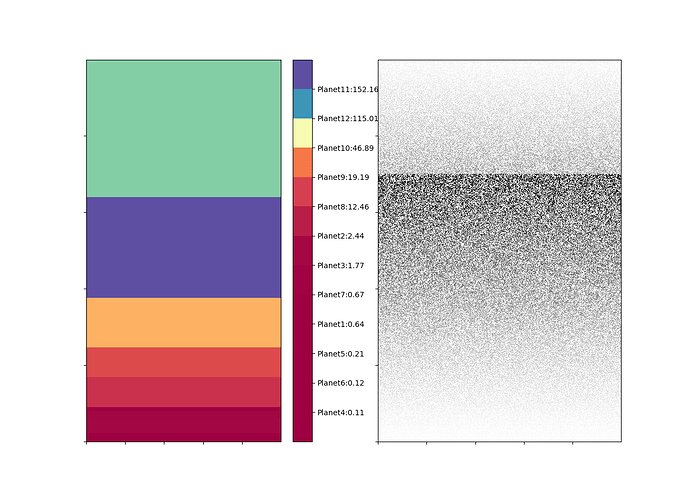Sooo,this post is,i think, is overdue.
Ive finished the prototype to the Solar System generator about 80%.With only some tweaks needed,that need to be discussed here.Ill show later what the prototype currently creates and how.
First of all,i want to ask how i should proceed with the player planet generation.
I was thinking of adding some common elements from the periodic table for metallic and non metallic elements.
theres the following choice of elements:
Non-Metallic : Hydrogen,Helium.
Metallic :Iron,Titanium,Tin,Copper,Aluminum,Carbon,Oxygen,Nitrogen,Carbon,Silicon and Uranium.Many more may be added as needed.
Also,non-metallics are found in higher quantities and further out from the main star since they are lighter than metallic elements,and the supernove that created the star system would blow the lighter elements farther out.
Those distributions could depend on the stars metalicity as they do in real life,but they might take more time to calculate.
The lithosphere and atmosphere composition will be decided by planet orbit position ,temperature and albedo.
Now,What my model currently does is simulate the orbit’s formation through pebble accretion.Big pebbles nonetheless lol, since computing power is limited.It uses the so-called Hills Sphere which is the radius around a body that can stably contain satellites.
The Y axis represents the distance from the sun on a logarithmic scale.
with each y value representing the smallest width of an orbit.
The picture on the right represents those pebbles and their mass, I’ve tried to “project” the discs of the orbits. and thus more mass should be on the higher orbits assuming the same density, then even more mass up to a certain point because of how elements on the planetary disk are arranged.
The one on the left the planets cleared orbit with a legend showing earth masses of each planet.
Firstly it calculates the Hills Sphere for every pebble, adding 1 on a “Field Matrix” to every orbit in the object’s Hills Sphere, then the orbit is given the average value of the field’s strength,because the pebbels clear the entirety of their orbit + if the added field strength is enough to pull the adjacent orbit to it(has the same value).It calculates the mass of every orbit that has formed.
Secondly it randomly chooses a distance (y point) and checks to see what orbit dominates that distance. Then it checks to see if the current object’s HillSphere is bigger than the current orbit width(it can merge with nearby orbits).It should actually reach the middle of the other body’s orbit but a compromise was made to speed up the simulation.
The simulation can stop after a number of iterations or after a certain number of planets is reached.If the second case then the HillSphere strength is increasing after each iteration to get to the desired planet number.
The player chosen planet WILL use TJWhales simulation,should it be used for every other habitable planet?
